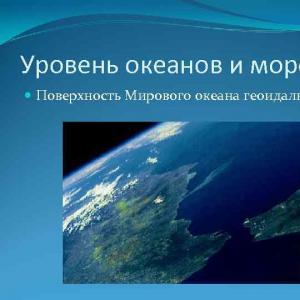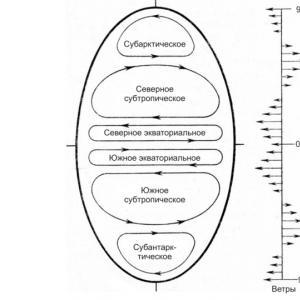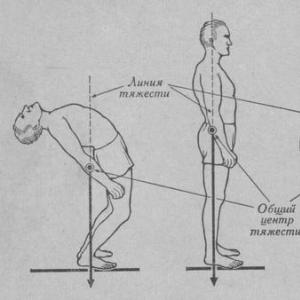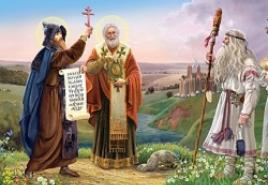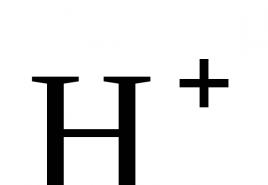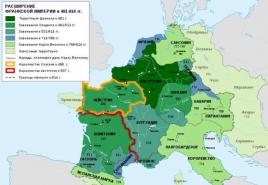Project calendar of historical events Battle of Kulikovo. Memorable Dates Project: Battle of Kulikovo
Almost all graduates russian schools know: before going to the Kulikovo field, Dmitry Ivanovich Moskovsky went north to the Trinity Monastery. The purpose of such a maneuver seems to be clear to everyone: the prince went to receive the blessing of Sergius of Radonezh for his feat. And even those who do not remember other details of the battle will undoubtedly tell that before this battle a duel took place between the monk Peresvet, sent by the holy elder to support the Moscow prince, with a certain Chelubey.
At the same time, as a rule, few people think about why Dmitry Donskoy, rushing to meet the enemy in order to prevent the unification of Mamai's troops with the army of the Lithuanian prince Yagailo, headed in the diametrically opposite direction. The illogical nature of such actions of Dmitry Ivanovich is obvious: from Moscow to Kolomna (where a meeting of the detachments that marched on the Kulikovo field was scheduled), 103 kilometers along a straight line; from Moscow to the Trinity Monastery - 70 kilometers, and from Trinity to Kolomna - another 140 kilometers. Thus, the "hurrying" grand Duke Moskovsky decided to more than double his path, which now, by the standards of that time, should have been at least two weeks! It is difficult to explain it logically. Of course, you can accept the point of view of the once famous teacher-innovator Viktor Fedorovich Shatalov, who once convinced schoolchildren that by doing so Dmitry wanted to mislead the enemy. But then it is necessary, at least, to come up with a way by which in the XIV century Mamai and Yagailo could receive timely news of the strange movements of the Moscow prince. And this is very difficult ...
The oddities, however, don't end there. It also remains unclear what made Dmitry Ivanovich strive to receive the blessing of Sergius, and not his nephew Theodore, the abbot of the Simonov Monastery, which was located very close (next to the modern Avtozavodskaya metro station)? And how could one hope for the blessing of Sergius or Theodore, if only two years before that they, apparently, had supported Metropolitan Alexei, who was in conflict with Dmitry because of the latter's desire at all costs to put his confidant Mityai on the Metropolitanate -Michael? After all, it was to them, to Sergius and Theodore, that the next, "legitimate" Metropolitan Cyprian addressed himself: "It did not hide from you and from the whole Christian race, how they treated me - as they did not treat any saint since the Russian the earth became. I, by God's will and the election of a great and holy cathedral and the appointment of an ecumenical patriarch, was appointed metropolitan throughout the Russian land, which the whole universe knows about. And now I went with all sincerity and goodwill to the great prince (Dmitry Ivanovich. - I. And he sent out your ambassadors so that they would not let me through, and he also forced the outposts, gathering detachments and placing the governor in front of them; and what evil to do to me, and besides that, to betray us without mercy, he taught and ordered those. But I, more worried about his dishonor and soul, went a different way, hoping for my sincerity and for my love, which I had for the great prince, and for his princess, and for his children. And is there such evil left whom he did not harm me! Blasphemy and abuse, ridicule, robbery, hunger! He imprisoned me naked and hungry at night. And after that cold night I still suffer. But my servants - over and above much and the evil that they had done, letting them go on nags, broken without saddles, in clothes made of bast, - they took the robbed out of the city up to shirts, and to pants, and to underpants; neither boots nor hats were left on them!
This message, dated June 23, 1378, concludes with a curse: "But since I and my hierarchy were subjected to such dishonor, by the power of grace given to me from the Most Holy and Life-Giving Trinity, according to the rules of the holy fathers and divine apostles, those who are involved in my detention, imprisonment, dishonor and desecration, and those who gave advice for this, may they be excommunicated and unbidden by me, Cyprian, the Metropolitan of All Russia, and cursed, according to the rules of the holy fathers! " 1 In other words, according to most researchers, Dmitry Ivanovich was then excommunicated and cursed 2. True, neither Sergius nor Theodore Cyprian supported at that moment. As V. A. Kuchkin notes, “at the moment of the decisive clash between the Moscow Grand Duke and the Metropolitan appointed in Constantinople, they did not have the courage to intercede for their spiritual master and condemn the secular ruler, but Sergius (unlike Fedor) did not change his principled line , after a few months voucher for Dionysius "3. Nevertheless, all this makes the blessing of Dmitry by Abbot Sergius problematic.
What actually happened in the late summer of 1380? Can we fix this? And, most importantly, to understand whether Sergius of Radonezh really played an almost decisive role in Dmitry Moskovsky's performance against Mamai?
For answers to these questions, we must turn to historical sourceswho brought us information about those events.
Over the course of many decades, ancient Russian scribes have repeatedly turned to the battle that took place in 1380 on the Kulikovo field. Over time, his descriptions were overgrown with more and more details, so that by about the middle of the 15th century they acquired the form that fully corresponds to the current "average" ideas about the Mamaev massacre. Among the sources, united in the so-called monuments of the Kulikovo cycle, are the chronicle stories, "Zadonshchina", "The Legend of the Mamayev Massacre", as well as "The Word about the Life and Repose of Dmitry Ivanovich".
The history of these monuments is built, for the most part, on the basis of textual observations. However, the relationships between the texts of these sources are so complex that they do not allow one to come to unambiguous conclusions. Therefore, the dating of individual works of this cycle are approximate.
The earliest are the texts of the chronicle story about the Battle of Kulikovo. They were preserved in two editions: a short one (as part of the Simeonov Chronicle, the Rogozhsky Chronicle and the Moscow-Academic List of the Suzdal Chronicle) and a long one (as part of the Sofia First and Novgorod Fourth Chronicles). Nowadays, it is generally accepted that the short edition, which appeared approximately at the end of the XIV - beginning of the XV century, preceded all other stories about the Battle of Kulikovo. The extensive version of the chronicle narrative, which, according to most researchers, could have appeared no earlier than the 1440s 4, was clearly influenced by later texts. These include, in particular, "Zadonshchina". The arguments cited by researchers trying to determine the time of the appearance of this poetic description of Mamaev's massacre include all conceivable arguments, up to the recognition of the "emotionality of the perception of events" as evidence in favor of its creation by a "contemporary, and possibly a participant" in the battle 5. On the other hand, the most recent dates date its text to the middle - second half of the 15th century.
The latest and at the same time the most extensive monument of the Kulikovo cycle is, by all accounts, "The Legend of the Mamayev Massacre". It is known in approximately 150 copies, none of which has preserved the original text. The datings of the "Legend" have a "spread" from the end of the XIV - the first half of the XV century 6 to 1530-1540s 7. Apparently, the most evidential dating proposed by VA Kuchkin and refined by BM Kloss. According to it, the "Tale" appeared no earlier than 1485, most likely in the second decade of the 16th century 8. Accordingly, the reliability of the information given in the "Tale" causes serious controversy.
An appeal to these sources gives a fairly complete idea of \u200b\u200bwhen and why the Old Russian scribes "remembered" that it was Sergius of Radonezh that inspired Dmitry Donskoy to fight the "godless evil prince of Ordin" Mamai.
In the earliest narrative "about the warrior" and about the massacres of others like the Don, "we do not find any mention of the name of Sergius.<…> At the same time, among those who died on the battlefield, "Alexander Peresvut" is mentioned, although there is no indication that he was a monk. And the monk would hardly be mentioned with the non-calendar name Peresvet.
The text of the poetic story about the Mamaev massacre, usually referred to as "Zadonshchina", is much less often used to reconstruct the circumstances of the battle at the mouth of the Nepryadva. But it was here for the first time that Peresvet was called "monk" and "old man" - however, only in late lists of the 17th century, obviously, influenced by "The Legend of the Mamaev Battle"; before that he was just a "Bryansk boyar". Oslyabya appears next to him - and also with a pagan, non-calendar name, which the monk could not be called.<…> According to the fair comment of the publishers, Oslyabi's appeal to Peresvet as a brother emphasizes that both of them are monks. However, the monastery, of which they allegedly were tonsured, is not named here.
The first mention of Sergius of Radonezh in connection with the Battle of Kulikovo is found in a lengthy chronicle story: two days before the battle, Dmitry Ivanovich allegedly "received a letter from the Reverend Abbot Sergius and a blessing from the holy elder; Thou, sir, did go, and God and the Holy Mother of God help you. "11. We find in this story the name of Alexander Peresvet with a new clarification:" You have been Bolyarin Bryanskiy before. "12 But the name Oslyabi is not here, nor is there the fact that Peresvet is now a monk.
It remains only to guess how the message of Sergius, which is being discussed here, fell into the hands of Dmitry Donskoy. A striking example of such conjectures, based, obviously, only on the "instinct of the heart," to which some authors resort, who try to "guess what the reasoning does not give an answer to" 13, are the arguments of A. L. Nikitin. In his opinion, the only envoy who could deliver the letter of Sergius to the Grand Duke was Alexander Peresvet. The basis for this guess is whole line assumptions and assumptions, none of which relies on the sources known to us: here is the assumption that the Dmitrievsky Ryazhsky monastery could have been founded exactly on the place where the message of Sergius of Radonezh caught up with the Moscow prince, and that in this place he himself Dmitry Ivanovich could be, because "he followed the initial report of the scouts that the Horde were in the upper reaches of the Tsna," and that Prince Dmitry Olgerdovich could have sent Peresvet, and Peresvet himself could go from Pereslavl, and on the way he "could not but spend the night" in Trinity Monastery, where - "quite naturally" - the abbot "could convey ... a" letter "to the Moscow prince" ... However, the author of these speculative constructions concludes, "I do not insist that everything happened exactly like this, however, this is the only possible explanation for the fact that Peresvet turned out to be so closely connected by tradition with St. Sergius, and the feat of arms of the Bryansk boyar acquired truly epic proportions. " Only in this way, in the opinion of this author, "the hesitation of the authors and editors of the narratives about the Kulikovo battle between the" monk "," monk "and" boyar "becomes clear, since - following the logic - whom, if not his monk, Sergius could send to the Grand Duke " fourteen . However, such constructions are unlikely to have anything to do with science: the number of "possibilities" here is inversely proportional to the degree of reliability of the results obtained.
The familiar detailed story about Dmitry Ivanovich's visit to the Trinity Abbot appears only in "The Legend of the Mamayev Massacre", more than a hundred years after the famous battle<…> In this story, Sergius also justifies Dmitry's delay in entering the monastery, and predicts a quick victory over the enemy, which - unexpectedly - turns out to be some "Polovtsy". And Peresvet and Oslyabya are no longer just monks, but schema monks who have taken the "third tonsure" - the great schema (which, by the way, forbade them to take up arms). Dmitry Ivanovich, according to the "Legend", does not immediately go to Kolomna, but first stops by Moscow to inform Metropolitan Cyprian (who in fact could not be in Moscow at that time) about the blessing of Sergius of Radonezh - which further delays his speech on approaching enemy. Moreover, from further narration it follows that already on the Kulikovo field the prince was caught up by a certain "ambassador with books" from Sergius of Radonezh. What made the author of The Tale to deviate from what we call a reliable story, and to assign such a large role to Sergius of Radonezh (and at the same time to Metropolitan Cyprian)?
Apparently, all these additions are primarily associated with the time when the Legend was written - when, after the liquidation of Novgorod's independence in 1478, Ivan III annexed not only the lands of the Novgorod boyars, but also part of the land holdings of the Novgorod church. These actions of the Moscow prince alarmed the representatives of the church. In the same year, a conflict arose between Ivan III and Metropolitan Gerontius over the management of the Kirillo-Belozersky monastery. In 1479, the Grand Duke accused the Metropolitan of incorrectly performing the procession during the consecration of the Cathedral of the Assumption (he went against the movement of the sun), but the Metropolitan did not admit his mistake. Then Ivan III forbade him to consecrate new churches in Moscow. Gerontius went to the Simonov Monastery and threatened that he would not return if the Grand Duke did not "finish off his brow". The Grand Duke, who had just barely liquidated the rebellion of his brothers - appanage princes, had to maneuver. He needed the support of the church, and therefore was forced to send his son to negotiate with the metropolitan. Gerontius, however, was firm in his position. Ivan III had to retreat: he promised to continue to listen to the metropolitan and not interfere in the affairs of the church.
The ideological basis for building new relations with the state for the church was the precedent with an attempt by Dmitry Donskoy to place his protege, Mityai-Mikhail, on the metropolitan see, which is why there was a conflict with Cyprian, which we mentioned at the very beginning of the article. To this end, the Chronicle of the 1470s-1480s included the "Tale of Mityai", which condemned the interference of secular authorities in issues that were the prerogative of the church. At the same time, the church made every effort to emphasize its role in the struggle against the Horde in the eyes of contemporaries and descendants. That is why the legendary episodes about the blessing of Dmitry Donskoy by Sergius of Radonezh and about the sending of two "monks" to battle: Oslyabi and Peresvet were inserted into the "Tale of the Mamaev Battle". So Sergius of Radonezh became not only the organizer of the monastic reform, which played a huge role in raising the authority of the church in general and monasteries in particular, but also the inspirer of the victory of the Moscow prince on the Kulikovo field.
Notes
1. Epistle of Metropolitan Cyprian to Abbots Sergius and Theodore // Bi6lioteka of Literature Ancient Rus... T. b. XIV - mid-15th century. SPb. 1999.S. 413, 423.
2. However, according to T.R. Galimov, the question of excommunication by Metropolitan Cyprian Dmitry Ivanovich Donskoy requires additional study.
See: T.R. Galimov The question of the excommunication of Dmitry Ivanovich Donskoy from the Church by the second epistle of Metropolitan Cyprian.
3. Kuchkin VA Sergiy of Radonezh // Questions of history. 1992. No. 10.P. 85.
4. Sometimes its dating is "rejuvenated" to the middle of the 15th century. See: Orlov A.S. Literary sources of the Tale of the Mamayev Massacre // Proceedings of the Department of Old Russian Literature. T. 2.M .; L. 1935.S. 157-162; cf .: Dictionary of scribes and
bookishness of Ancient Russia. Part 2. Issue. 2. Second half of the XIV-XVI centuries. L. 1989.S. 245.
5. Dmitriev LA Literary history of the monuments of the Kulikovo cycle // Tales and stories about the Kulikovo battle. L. 1982.S. 311, 327-330.
6. Grekov IB About the original version of "The Legend of the Mamaev Battle" // Soviet Slavic Studies. 1970. No. b.
S. 27-36; He's the same. Eastern Europe and the decline of the Golden Horde. M. 1975.S. 316-317, 330-332,431-442; Azbelev S. H. The tale of the Battle of Kulikovo in the Novgorod Chronicle of Dubrovsky // Chronicles and chronicles: Sat. articles. 1973. M. 1974. S. 164-172; He's the same. 06 oral sources of chronicle texts: On the material of the Kulikovo cycle // Chronicles and chronicles: Sat. articles. 1976. M. 1976. S. 78-101; He's the same. 06 oral sources of chronicle texts: Based on the material of the Kulikovo cycle // Chronicles and chronicles. Sat. articles. 1980. M. 1981. S. 129-146 and others.
7. Mingalev VS "The Legend of the Mamay Massacre" and its sources // Author's abstract. dis .... cand. ist. sciences. M .; Vilnius. 1971.S. 12-13.
8. VA Kuchkin proceeds from the mention in the "Legend" of the Constantine-Eleninsky gates of the Moscow Kremlin, which until 1490 were called Timofeevsky. See: V.A.Kuchkin.Victory on the Kulikovo field // Questions of history. 1980. No. 8.
S. 7; He's the same. Dmitry Donskoy and Sergiy of Radonezh on the eve of the Battle of Kulikovo // Church, society and state in feudal Russia: Sat. articles. M. 1990.S. 109-114. BM Kloss attributes the "Legend" to the Kolomna bishop Mitrofan and dates the monument to 1513-1518. See: Kloss BM 06 the author and time of creation of "The Legend of the Mamay Massacre" // 1p memoriam: Collection in memory of Ya. S. Lurie. SPb. 1997.S. 259-262.
9. Rogozhsky chronicler // PSRL. T. 15.M. 2000. Stlb. 139.
10. Zadonshchina // Library of Literature of Ancient Rus. T. 6.P. 112.
11. Novgorod fourth chronicle // PSRL. T. 4.1. M. 2000.S. 316; Wed: Sophia's first chronicle of the older edition // PSRL.
T. 6. Iss. 1. M. 2000. Stlb. 461.
12. Novgorod Fourth Chronicle. P. 321; Wed: Sophia First Chronicle. Stb. 467.
13. Khitrov M. Foreword // Grand Duke Alexander Nevsky. SPb. 1992.S. 10.
14. Nikitin A. L. The feat of Alexander Peresvet / Dermeneutics of Old Russian literature of the X-XVI centuries. Sat. 3.M. 1992.
S. 265-269. Italics are mine everywhere. - I. D.
15. That is, it was hard.
16. "This delay of yours will turn out to be a double help for you. For it is not now, my lord, that you will wear the death crown, but in a few years, and for many others now the crowns are being woven."
17. That is, more than one attack was met.
18. The Legend of the Mamaev Massacre // Library of Literature of Ancient Russia. T. 6.P. 150, 152.
19. Ibid. P. 174.
Sergius of Radonezh
Sergius of Radonezh (1314-1392) - monk, saint, founded the Trinity Monastery.
At birth, in the biography of Sergius of Radonezh, the name Bartholomew was received. Lagging behind in learning from his peers, Sergius began to study the Holy Scriptures. Around 1328, he and his family moved to Radonezh. There he went to a monastery, and after a while he founded the Church of St. Sergius of Radonezh in the name of the Holy Trinity.
Then he became abbot at the Epiphany Monastery, and took the name Sergius. A few years later, a prosperous temple of St. Sergius of Radonezh was formed in this place. Even the patriarch praised the life of the monastery named Trinity-Sergius. Soon the Monk Sergius of Radonezh became highly respected in the circles of all princes: he blessed them before battles, tried them on among himself. According to one contemporary, Sergius "with quiet and meek words" could act on the hardest and hardest of hearts; very often he reconciled princes at war with each other, persuading them to obey the Grand Duke of Moscow (for example, the Rostov prince - in 1356, the Nizhny Novgorod - in 1365, Oleg Ryazan, etc.), due to which by the time of the Kulikovo battle, almost all Russian princes recognized the supremacy of Dmitry Ioannovich. According to the version of the life, going to this battle, the latter, accompanied by the princes, boyars and the governor, went to Sergius to pray with him and receive a blessing from him. Blessing him, Sergius predicted victory and salvation from death for him and sent his two monks, Peresvet and Oslyabya, on a campaign.
There is also a version (V.A.Kuchkin), according to which the story of the Life of Sergius of Radonezh about the blessing of Dmitry Donskoy by Sergius of Radonezh to fight Mamai refers not to the Battle of Kulikovo, but to the battle on the Vozha River (1378) and is associated in later texts ("The Legend of the Mamayev Massacre") with the Battle of Kulikovo later, as with a larger event.
After the Battle of Kulikovo, the Grand Duke began to treat the Radonezh abbot with even greater reverence and invited him in 1389 to seal a spiritual will legitimizing new order succession to the throne from father to eldest son.
According to his life, Sergius of Radonezh performed many miracles. People came to him from different cities for healing, and sometimes even just to see him. According to the life, he once resurrected a boy who died in his father's arms when he carried the child to the saint for healing.
Battle of Kulikovo
Battle of Kulikovo The reason for the Battle of Kulikovo was the aggravation of relations with the Golden Horde and the growing influence of the Moscow principality. However, the formal reason for the beginning of the conflict was the refusal of the Moscow prince to increase the amount of tribute paid. Mamai planned an armed clash with the Moscow squad back in 1378. But the army of Murza Begich suffered a serious defeat on the Vozha River. Despite the serious strengthening of Moscow, Dmitry needed the support of other appanage princes. In many ways, for this, the prince sought and received the blessing of Sergius of Radonezh, whose icons can be seen today in many churches. But, despite this, neither Ryazan nor Tver responded to his call. And the princes of Suzdal generally sided with Mamai.
The participants in the Battle of Kulikovo tried to gather as many troops as possible. At the disposal of Dmitry Donskoy were only the soldiers of the Moscow and Vladimir princedoms, as well as the soldiers of Prince Andrei Olgerdovich. According to modern estimates of historians, their total number reached 50-100 thousand people. The Lithuanian prince Jagailo was in a hurry to the Horde army, which, according to various experts, was from 60 to 150 thousand soldiers. Dmitry tried to prevent the connection of Mamai's troops and he succeeded. Also, in the army of Mamai there were about 4 thousand Genoese, Muslim mercenaries, Yases and others.
From the chronicle sources it is known that the Battle of Kulikovo took place in the area of \u200b\u200bthe mouth of the Nepryadva and Don. However, it is reliably known that at that time the left bank of the Nepryadva was covered with forest. And the small field that still exists today is too small for such a large-scale battle to take place on it. No ancient weapons or remains were found in these places. Thus, the question of the place of the battle remains open for many researchers.
A brief description of the Battle of Kulikovo, which took place on September 8, 1380, will not take much time. From the life of Sergius of Radonezh it is known that the battle was preceded by a duel between two heroes Peresvet and Chelubey. However, early sources do not mention him. Before the start of the Battle of Kulikovo, on September 7, Russian troops were lined up in battle formations. The main regiment was located in the center and was under the command of the okolnichego Velyaminov. Regiment right hand was placed under the command of Andrei Olgerdovich, the Lithuanian prince, the left-hand regiment was commanded by Dmitry Mikhailovich Bobrok-Volynsky. It is not known exactly where the ambush regiment was located. Probably behind the shelf of the left hand. It was he who decided the outcome of the battle.
The result of the Kulikovo battle was the flight of Mamai and his troops. Moreover, the ambush regiment pursued the enemies for another 50 versts to the Red Sword River. Dmitry Donskoy himself was knocked off his horse in this battle. He was found only at the end of the battle.
The consequences of the Battle of Kulikovo had a serious impact on the further history of Russia. Although the Horde yoke did not end as many had hoped, the amount of tribute collected decreased. The authority of Moscow and Prince Dmitry increased, which allowed the Moscow principality to become the center of the unification of the lands of Rus. The significance of the Battle of Kulikovo also lies in the fact that it showed the possibility of a final victory over the Horde and the closeness of the end of the yoke.
The value of the victory at Kulikovo the field is huge: Moscow has strengthened its role as the unifier of the Russian lands, their leader; a turning point occurred in relations between Russia and the Horde (the yoke will be lifted in 100 years, in 1382 Khan Tokhtamysh will burn Moscow, but the decisive step towards liberation was made on August 8, 1380); the amount of tribute that Russia now paid to the Horde was significantly reduced; The Horde continued to weaken, from the blow received in the Kulikovo battle, it did not manage to recover. The Battle of Kulikovo became the most important stage in the spiritual and moral revival of Russia, the formation of its national identity.
Some time after the Mongol-Tatar invasion, the Russian people began to understand that it was no longer possible to be under the yoke of the Golden Horde. The first who dared to give a decisive rebuff to the invaders was the Moscow prince Dmitry Ivanovich. Let's talk briefly about the Battle of Kulikovo and consider the calendar of memorable dates of that time.
Weakening the Golden Horde
After the conquest of the Russian lands, the rulers of the Mongol-Tatar state - the Golden Horde - did not doubt that they had secured a reliable income for themselves. From now on, all Russian princes were obliged to pay a large tribute to the Horde khans - a payment for peace on their lands.
But over time, the once powerful and influential Golden Horde began to decline. Disagreements began to occur within her, a struggle for power began.
In the second half of the XIV century, an impressive part of the Mongol-Tatar state fell into the hands of the temnik Mamai. In those days, a military leader was called a temnik, who headed the tumen - an army of 10 thousand soldiers. Mamai turned out to be a strong and strong-willed person, and they obeyed him unquestioningly.

Figure: 1. Temnik Mamai.
Meanwhile, the Moscow principality was gaining strength in Russia. For two hundred years, Russian princes regularly paid tribute to the Horde khans, but the situation changed when Ivan Kalita's grandson, the Moscow prince Dmitry Ivanovich, came to power. Seeing the weakness of the Golden Horde, he realized that the time had come for decisive action.
Preparing to confront
Prince Dmitry was not going to recognize the rule of the Golden Horde and pay tribute to the Tatars. Seeing no other solution to the issue, he began to prepare for a serious battle.
TOP-4 articleswho read along with this
First of all, he began to strengthen the Moscow principality and ordered to erect reliable stone walls around the Kremlin.
Prince Dmitry understood perfectly well that the wooden fortifications of the Kremlin would not stop the Tatars. In addition, the arrows soaked in oil will easily set fire to wood and cause a fire in the city. The solution to the problem was solid limestone masonry, which was not afraid of fire. The new walls were about three meters thick.
Having learned that Russia was no longer going to pay tribute, the angry Mamai gathered a large army to punish the rebellious country. Wanting to repeat the glory of Khan Batu, he planned to destroy russian state... In the summer of 1380 it became known that an innumerable army of the Golden Horde was moving towards the Russian lands.
To meet with dignity dangerous enemy, Prince Dmitry began to collect russian army... He sent messengers to all the principalities calling for unification and the creation of a common army. In just 30 days he managed to gather a huge army, which has never been in Russia.

Figure: 2. Prince Dmitry.
Ordinary people fervently asked God to protect their homeland. In order to receive a blessing to fight the enemy, Prince Dmitry went to the Trinity Monastery. Elder Sergius of Radonezh blessed him and gave him to help two monks - the strongest warriors Oslyabyu and Peresvet.
The great battle began on September 8, 1380 on the Kulikovo field - the place where the Nepryad River flows into the Don.
According to legend, the confrontation between the armies of many thousands began with a duel between two strongest warriors: the Tatar Chelubey and the Russian hero Peresvet. The mighty horsemen struck each other to death, after which a bloody battle began.
The pressure of Russian soldiers, their fierce hatred of enemies and belief in victory helped to cope with the Horde army. The Mongol-Tatars retreated under the power of the Russian cavalry, and after a while they completely fled.

Figure: 3. The Kulikovo battle.
In memory of the significant victory over the Mongol-Tatar army, the people began to call the Moscow prince Dmitry Donskoy.
Despite the brilliant victory, the Russians were under pressure from the Golden Horde for another century. However, the Battle of Kulikovo played a significant role in the history of Russia:
- for the first time the Russian people felt their own strength, believed in a bright future and final deliverance from the Mongol-Tatar yoke;
- russian princes were able to clearly see that the main strength lies in the unity of all Russian lands.
In 1380, in the Battle of Kulikovo, the Russian regiments of Dmitry Donskoy defeated the Horde army. After the victory on the Kulikovo field, for which Donskoy was blessed by Sergius of Radonezh, Russia gained independence and unity
Today is the Day military glory Russia - Victory Day of the Russian regiments led by the Grand Duke Dmitry Donskoy over the Mongol-Tatar troops in the Battle of Kulikovo in 1380. It was established by Federal Law No. 32-FZ of March 13, 1995 "On the days of military glory and memorable dates in Russia."
Terrible disasters were brought by the Tatar-Mongol yoke on the Russian land. But in the second half of the 14th century, the collapse of the Golden Horde began, where one of the older emirs, Mamai, became the actual ruler. At the same time, Russia was in the process of forming a strong centralized state through the unification of Russian lands under the rule of the Moscow principality. The strengthening of the Moscow principality alarmed Mamai. In 1378 he sent a strong army under the command of Murza Begich to Russia.
The army of Moscow Prince Dmitry Ivanovich met the Horde on the Vozha River and utterly defeated them. Mamai, having learned about the defeat of Begich, began to prepare for a big campaign against Russia. He entered into an alliance with the Grand Duke of Lithuania Yagailo and the Ryazan prince Oleg. In the summer of 1380, Mamai began a campaign. (8) On September 16, 1380, near the confluence of the Nepryadva River with the Don, a fierce battle broke out.
Personally, Dmitry Ivanovich fought in the forefront of his troops. The enemy could not withstand the unexpected blow and began to retreat, and then took to flight. Mamai's army was completely defeated. Jagiello's detachments, having learned about the victory of the Russians, quickly returned to Lithuania. The battle on the Kulikovo field seriously undermined the military power of the Golden Horde and hastened its subsequent disintegration. She contributed to the further growth and strengthening of Russia as a single state, raised the role of Moscow as a center for the unification of Russian lands.
According to the chronicles, the battle took place on the day of the Nativity of the Most Holy Theotokos. Prince Dmitry pinned great hopes on the help of the Mother of God and offered her his prayers. In the church of the Rozhdestvensky monastery in the city of Vladimir, where the body of Prince Alexander Nevsky rested, on the night of Christmas (from September 7 to September 8, old style), the ministers prayed, asking Alexander to help Dmitry. And then a miracle happened - candles were lit near the prince's coffin, Prince Alexander rose above the coffin, looked at the monks and became invisible.
The Mother of God did not reject the prayers of Orthodox Christians and supported their spirit and strength in a difficult battle. Since those years, the Russian Orthodox Church has celebrated the victory over Mamai on the day of the Nativity of the Most Holy Theotokos.
It must be said here that although the event itself took place in 1380 on September 8 according to the old style, i.e. September 16 - a new, but officially holiday - the Day of Military Glory - is celebrated on September 21. This is the cost of converting dates from the old style to the new one. Since, when setting the date, the rule was not taken into account: when translating dates of the 14th century, 8 days are added to the old style, and according to the rules of the Russian Orthodox Church, 13 days are added (according to church chronology, when translating dates from the old style to the new century, 13 days are always added, outside depending on the century when it happened). Because of these inconsistencies in the calendars, it turns out that the correct calendar anniversary of the battle falls on September 16, and the state and Orthodox celebration remains on September 21.
On September 21, our country celebrates the Day of Military Glory of Russia - the Day of the victory of the Russian regiments led by Grand Duke Dmitry Donskoy over the Mongol-Tatar troops in the Battle of Kulikovo (1380). It was established by Federal Law No. 32-FZ of March 13, 1995 "On the days of military glory and memorable dates in Russia."
Terrible disasters were brought by the Tatar-Mongol yoke on the Russian land. But in the second half of the 14th century, the collapse of the Golden Horde began, where one of the older emirs, Mamai, became the actual ruler. At the same time, Russia was in the process of forming a strong centralized state through the unification of Russian lands under the rule of the Moscow principality. The strengthening of the Moscow principality alarmed Mamai. In 1378 he sent a strong army under the command of Murza Begich to Russia. The army of Moscow Prince Dmitry Ivanovich met the Horde on the Vozha River and utterly defeated them. Mamai, having learned about the defeat of Begich, began to prepare for a big campaign against Russia. He entered into an alliance with the Grand Duke of Lithuania Yagailo and the Ryazan prince Oleg. In the summer of 1380, Mamai began a campaign. (8) On September 16, 1380, near the confluence of the Nepryadva River with the Don, a fierce battle broke out. Personally, Dmitry Ivanovich fought in the forefront of his troops. The enemy could not withstand the unexpected blow and began to retreat, and then took to flight. Mamai's army was completely defeated. Jagiello's detachments, having learned about the victory of the Russians, quickly returned to Lithuania. Painting by M.I. Avilov's "Duel of Peresvet with Chelubey on the Kulikovo field" (1943) According to the chronicles, the battle on the Kulikovo field took place on the day of the Nativity of the Most Holy Theotokos (September 8, old style). Prince Dmitry pinned great hopes on the help of the Mother of God and offered her his prayers. In the church of the Nativity Monastery in the city of Vladimir, where the body of Prince Alexander Nevsky lay, on the night of the Nativity of the Virgin (from September 7 to 8 according to the old style), the ministers prayed, asking Alexander to help Dmitry. And then a miracle happened - candles were lit near the prince's coffin, Prince Alexander rose above the coffin, looked at the monks and became invisible. The Mother of God did not reject the prayers of Orthodox Christians and supported their spirit and strength in a difficult battle. Since those years, the Russian Orthodox Church has celebrated the victory over Mamai on the day of the Nativity of the Most Holy Theotokos. The battle on the Kulikovo field seriously undermined the military power of the Golden Horde and hastened its subsequent disintegration. She contributed to the further growth and strengthening of Russia as a single state, raised the role of Moscow as a center for the unification of Russian lands. Monument in honor of the victory on the Kulikovo field, designed by A.P. Bryullova (Photo: liveinternet.ru) In the middle of the 19th century, on the site that was considered the Kulikovo field, a monument was erected and solemnly opened, designed by the architect A.P. Bryullov. In 1996, by the Decree of the Government of the Russian Federation, the State Military-Historical and Natural Museum-Reserve "Kulikovo Pole" was created on the site of the battle. And today the international military-historical festival "Kulikovo Field" is annually held here. Here I must say that although the event itself took place in 1380 on September 8 according to the old style, that is, on September 16 - in a new way, but officially the holiday - the Day of Military Glory - is celebrated on September 21. This is the cost of converting dates from the old style to the new one. Since, when setting the date, the rule was not taken into account: when translating dates of the 14th century, 8 days are added to the old style, and according to the rules of the Russian Orthodox Church, 13 days are added (according to church chronology, when translating dates from the old style to the new century, 13 days are always added, outside depending on the century when it happened). Because of these inconsistencies in the calendars, it turns out that the correct calendar anniversary of the battle falls on September 16, and the state and Orthodox celebration remains on September 21.

